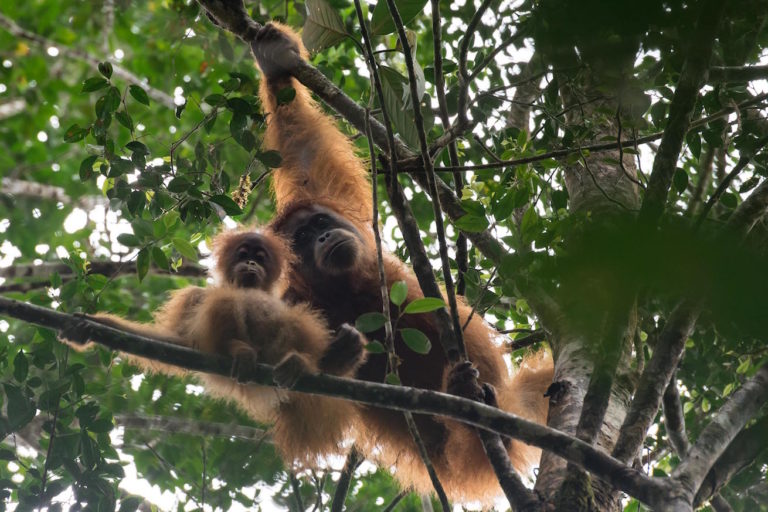- A tunnel collapse, the second this year, at the site of a planned hydroelectric dam in Sumatra has killed another Chinese construction worker.
- The latest incident brings the death toll at the project site to 17 in the space of less than two years.
- The police have declared the death to be accidental, but the string of incidents has raised concerns over the safety of the project, which is already controversial because it threatens to fragment the only known habitat of the critically endangered Tapanuli orangutan.
JAKARTA — A second tunnel collapse this year at a controversial dam construction site in Indonesia has killed another Chinese worker, bringing the toll from the project to 17 in just two years.
The worker, identified as Wan Shui, 35, was severely injured in a tunnel cave-in on Nov. 9 and rushed to hospital, where he died the following day. The project developer, PT North Sumatra Hydro Energy (NSHE), didn’t respond to Mongabay’s request for comment.
The incident mirrors a tunnel collapse on Aug. 21 that killed another Chinese worker, Wang Jian, 52. Two other workers were injured in that event. This latest incident adds to the growing criticism of the Batang Toru hydropower project in North Sumatra province, which is already under heavy scrutiny because of its location in the only known habitat of the critically endangered Tapanuli orangutan (Pongo tapanuliensis).
“Yet another Chinese worker has been killed in construction of the Batang Toru dam,” said Amanda Hurowitz, senior program director for Southeast Asia at U.S.-based campaign group Mighty Earth, which has flagged the project’s potential impacts on the orangutans. “How construction on this project is allowed to continue without adequate safety procedures is a real mystery.”

Environmental activists and scientists have long warned of the region’s susceptibility to landslides, due to a combination of high rainfall, hilly terrain, poor drainage, and tectonic activity, with the hydropower project sitting near a known fault line.
In December 2020, at least one worker went missing and was presumed dead after a landslide struck the area. In April 2021, a torrent of mud swept away workers and locals after heavy rains pounded the site, claiming the lives of 10 locals and three workers. In May this year, a 46-year-old worker from China, Zhan Guochun, died after a falling tree struck him while he was working.
Following the tunnel collapse in August, police ruled out any negligence on the developer’s part, saying it had complied with standard operating procedures. However, police did reprimand the developer for not immediately reporting the two cases of injury, and only reporting Wang’s death.
Besides safety concerns, the dam project also faces criticism over its potential impact on the Tapanuli orangutan. An estimated 767 of the great apes live in the forest, divided among three subpopulations, according to a study. Researchers say the dam would further fragment their habitat, increasing their risk of extinction.
NSHE, the project developer, says the dam will have a minor impact on the orangutan habitat because it plans to develop only about a tenth of its 6,598-hectare (16,304-acre) concession. It also says it will mitigate any impacts through various measures, such as building bridges to connect the fragmented habitats.
But the recent string of accidents should raise doubt over this claim, Hurowitz said.
“[The latest incident] makes any claim about protecting orangutans that much more specious if they can’t even protect their own workers,” she said.
Citation:
Meijaard, E., Ni’matullah, S., Dennis, R., Sherman, J., Onrizal, & Wich, S. A. (2021). The historical range and drivers of decline of the Tapanuli orangutan. PLOS ONE, 16(1), e0238087. doi:10.1371/journal.pone.0238087
Banner image: Wolfsloch Tunnel in Switzerland. Image courtesy of Kecko/Flickr.
FEEDBACK: Use this form to send a message to the author of this post. If you want to post a public comment, you can do that at the bottom of the page.
